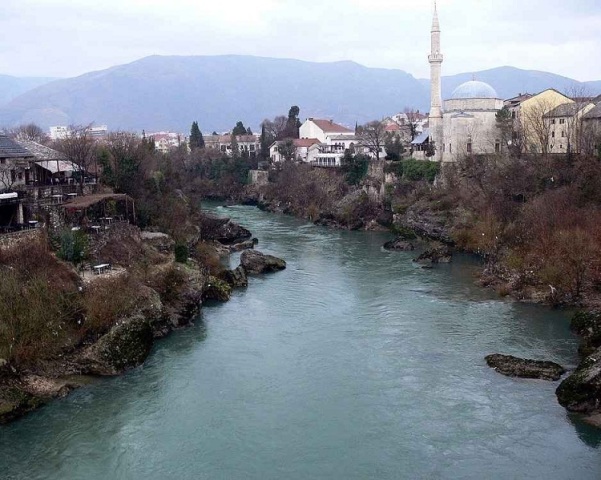Bosnia and Herzegovina is a European country that forms a part of the Balkan Peninsula. With this article, know some fun & interesting facts about Bosnia and Herzegovina.
Facts About Bosnia and Herzegovina
Bosnia and Herzegovina is a country situated on the Balkan peninsula of Southern Europe. It is basically a landlocked country, with the exception of 26 kilometers of the Adriatic Sea coastline that centers on the town of Neum. Bosnia and Herzegovina stands bordered by Croatia in the north, west and south, Serbia in the east and Montenegro also in the south. Today, the country consists of two Entities - the Federation of Bosnia and Herzegovina, mainly comprising of Bosniaks and Croats, and the Republika Srpska, largely Serb. Its geography ranges from mountainous in the center and south to hilly in the northwest and flat in the northeast. Bosnia and Herzegovina has moderate continental climate, characterized by hot summers and cold, snowy winters. The information provided in the lines below will help you explore the country further.

Image: By Christian Bickel (Own work) [CC-BY-SA-2.0-de (http://creativecommons.org/licenses/by-sa/2.0/de/deed.en)], via Wikimedia Commons
Fun & Interesting Facts about Bosnia and Herzegovina
-
The official languages of Bosnia and Herzegovina are Bosnian, Serbian and Croatian.
-
Majority of the population in Bosnia and Herzegovina comprises of Muslims, followed by Orthodox, Catholics, Protestants and others.
-
The three main ethnic groups in Bosnia and Herzegovina are Bosniak, Serb and Croat.
-
The currency of Bosnia and Herzegovina is Marka.
-
The capital of Bosnia and Herzegovina is Sarajevo.
-
Bosnia and Herzegovina follows the system of Federal Democratic Republic.
-
Bosnia and Herzegovina forms a part of the Balkan Peninsula, an area in South East Europe.
-
Majority of the landscape in Bosnia and Herzegovina is mountainous and comprises of areas of karst (limestone).
-
The highest peak in Bosnia and Herzegovina is Maglic Mountain (2386 m), in the Sutjeska National Park.
-
Sutjeska National Park is the oldest national park in Bosnia and Herzegovina.
-
Stecak, a medieval tombstone is a religious monument that can be seen throughout the countryside of Bosnia and Herzegovina.
-
Bosnia and Herzegovina was conquered by the Ottoman Empire in the second half of the 15th century. Later, at the Congress of Berlin in 1878, Austria-Hungary was given a mandate to occupy and govern Bosnia and Herzegovina.
-
Tuzla city derives its name from the word "tuz", the Turkish work for salt. Tuzla's salt comes from its salt water springs.
-
After the Second World War, Yugoslavia became the Federal Peoples' Republic of Yugoslavia and Bosnia became an independent republic within it.
-
Bosnia and Herzegovina gained independence from Yugoslavia in the year 1992.
-
Inter-ethnic war erupted in Bosnia and Herzegovina after independence, in 1992, and lasted till 1995.
-
In March 1994, Muslims and Croats in Bosnia signed an agreement creating the Federation of Bosnia and Herzegovina, narrowing the field of warring parties to two.
-
Along with a national government, Bosnia and Herzegovina has a second tier of government - the Federation of Bosnia and Herzegovina and the Republika Srpska, which deals with internal affairs:
-
Bosnia and Herzegovina is a potential candidate for membership in the European Union and NATO.
-
In Bosnia and Herzegovina, the distinction between a Bosnian and a Herzegovinian is maintained as a regional, not an ethnic, distinction.
-
Bosnia is believed to have been in inhabitation at least since the Neolithic age.
-
Sarajevo, the largest city in Bosnia and Herzegovina, hosted the 1984 Winter Olympic Games.
See also
More from iloveindia.com
- Home Remedies | Ayurveda | Vastu | Yoga | Feng Shui | Tattoos | Fitness | Garden | Nutrition | Parenting | Bikes | Cars | Baby Care | Indian Weddings | Festivals | Party ideas | Horoscope 2015 | Pets | Finance | Figures of Speech | Hotels in India : Delhi | Hyderabad | Chennai | Mumbai | Kolkata | Bangalore | Ahmedabad | Jaipur
- Contact Us Careers Disclaimer Privacy Policy Advertise With Us Lifestyle Sitemap Copyright iloveindia.com. All Rights Reserved.







